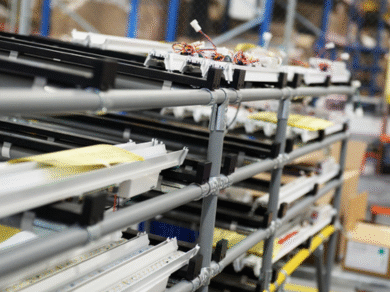Precast Concrete Piles – A Comprehensive Guide

Precast concrete piles are an essential component in modern construction, providing a reliable foundation solution for a variety of structures. In this article, we delve deep into the intricacies of precast concrete piles, exploring their benefits, applications, manufacturing processes, and installation techniques. Our goal is to provide you with a detailed understanding of why precast concrete piles are the preferred choice for many construction projects.
Introduction to Precast Concrete Piles
Precast concrete piles are reinforced concrete units that are cast and cured in a controlled factory environment before being transported to the construction site. This process ensures high-quality, uniform products that can withstand the rigors of various environmental conditions.
Advantages of Precast Concrete Piles
Precast concrete piles offer numerous advantages over other types of foundation systems. Here are some key benefits:
- Durability and Strength: Precast concrete piles are incredibly durable and strong, making them ideal for supporting heavy loads and withstanding harsh environmental conditions.
- Quality Control: The controlled factory environment ensures consistent quality and precise dimensions, reducing the risk of defects and variability.
- Cost-Effectiveness: While the initial cost may be higher, the long-term benefits, such as reduced maintenance and longer lifespan, make precast concrete piles a cost-effective solution.
- Speed of Construction: Precast piles can be manufactured and cured simultaneously with other construction activities, significantly reducing project timelines.
- Environmental Benefits: Precast concrete piles generate less waste and require fewer raw materials compared to other piling methods, making them an environmentally friendly option.
Applications of Precast Concrete Piles
Precast concrete piles are versatile and can be used in a wide range of applications. Some common uses include:
Residential Buildings
In residential construction, precast concrete piles provide a stable and robust foundation that ensures the longevity and safety of homes. They are particularly useful in areas with poor soil conditions where traditional foundations might fail.
Commercial and Industrial Structures
Precast concrete piles are widely used in the construction of commercial and industrial buildings due to their ability to support heavy loads and resist environmental stresses. They are ideal for warehouses, factories, and office buildings.
Infrastructure Projects
Infrastructure projects such as bridges, highways, and railways benefit greatly from the use of precast concrete piles. Their durability and strength make them suitable for supporting large-scale structures subjected to dynamic loads and varying weather conditions.
Marine and Coastal Construction
In marine and coastal construction, precast concrete piles are used to build docks, piers, and seawalls. Their resistance to corrosion and ability to withstand tidal forces make them the preferred choice for such projects.
Manufacturing Process of Precast Concrete Piles
The manufacturing process of precast concrete piles involves several meticulous steps to ensure high quality and durability:
Design and Engineering
The first step is the design and engineering phase, where the specifications and dimensions of the piles are determined based on the project requirements. This phase also includes structural analysis to ensure the piles can withstand the expected loads.
Material Selection
High-quality materials, including cement, aggregates, and reinforcing steel, are selected to ensure the strength and durability of the piles. The proportions of these materials are carefully calculated to meet the desired specifications.
Casting
The casting process involves pouring the concrete mixture into molds that are designed to the specified dimensions. Reinforcing steel bars are placed within the molds to provide additional strength. The molds are then vibrated to eliminate air pockets and ensure proper compaction of the concrete.
Curing
Curing is a critical step in the manufacturing process. The piles are kept in controlled conditions to ensure proper hydration and hardening of the concrete. This step is crucial for achieving the desired strength and durability.
Quality Control and Testing
Before the piles are transported to the construction site, they undergo rigorous quality control and testing. This includes compressive strength tests, dimensional checks, and visual inspections to ensure that each pile meets the required standards.
Installation Techniques for Precast Concrete Piles
The installation of precast concrete piles requires specialized equipment and skilled personnel. Here are the common installation techniques:
Driving
Driving is the most common method of installing precast concrete piles. It involves using a pile driver to hammer the piles into the ground. This technique is suitable for most soil conditions and provides a firm and stable foundation.
Jetting
Jetting involves using a high-pressure water jet to facilitate the penetration of the piles into the soil. This method is particularly useful in sandy or loose soils where driving might not be effective.
Vibrating
In vibrating installation, a vibratory hammer is used to insert the piles into the ground. This technique is effective in granular soils and helps in achieving the desired depth and alignment.
Pre-Drilling
Pre-drilling involves drilling a hole in the ground before installing the piles. This method is used in hard or rocky soils where other installation techniques might not be feasible.
Conclusion
Precast concrete piles are a crucial element in modern construction, offering numerous benefits such as durability, cost-effectiveness, and environmental friendliness. Their versatility makes them suitable for a wide range of applications, from residential buildings to large-scale infrastructure projects. By understanding the manufacturing and installation processes, we can appreciate the value that precast concrete piles bring to the construction industry.



